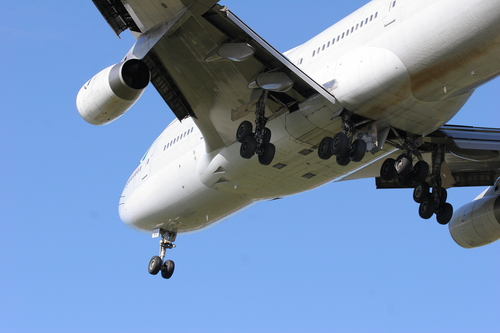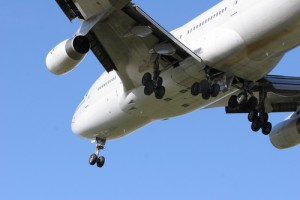Time Based Separation introduced at Heathrow
Posted: 27 May 2015 | Katie Sadler, Digital Content Producer, International Airport Review
NATS and Lockheed Martin have led the introduction of Time Based Separation at Heathrow Airport reducing delays by an estimated 80,000 minutes per-year. The new Time Based Separation (TBS) technology separates arriving aircraft by time instead of distance and is seen as a major milestone in cutting delays at Heathrow Airport. Developed by air traffic control […]


NATS and Lockheed Martin have led the introduction of Time Based Separation at Heathrow Airport reducing delays by an estimated 80,000 minutes per-year.


The new Time Based Separation (TBS) technology separates arriving aircraft by time instead of distance and is seen as a major milestone in cutting delays at Heathrow Airport.
Developed by air traffic control company NATS and Lockheed Martin, an air traffic management (ATM) technology provider, TBS is a world first and is expected to halve headwind delays, the single biggest cause of arrival delay at the airport.
Join us live: Shaping the Next Generation of Hold Baggage and Air Cargo Screening
Join us live for an insightful webinar on 11th December at 14:00 GMT, in collaboration with Smiths Detection, as we explore the strategic balance of operational efficiency, regulatory compliance, and sustainability in high-volume security environments.
This session offers a focused look into future-proofing your security strategy.
Key learning points
- Cost Reduction: Strategies to minimize bag travel time while simultaneously reducing operational costs.
- Regulatory Roadmap: Insights into the next wave of regulatory changes and their impact on future investment decisions.
- Sustainable Systems: Practical approaches to building sustainability into security systems and lowering the total cost of ownership (TCO).
- Scalable Solutions: Real-world examples of scalable systems supporting current airport growth and preparing for tomorrow.
Register now for expert insights, case studies, and actionable strategies on operational efficiency!
The introduction of TBS allowed NATS controllers to land on average two more aircraft per hour and halve delays when compared to similar conditions before the system was implemented. Overall this means TBS is on track to save 80,000 minutes of delay per-year at Heathrow.
Derek Provan, Heathrow Director of Airside Operations, commented on the installation: “Time Based Separation on final approach, a world first at Heathrow, addresses the biggest single cause of arrival delay at the airport. Heathrow has been operating at 98% capacity for over a decade and so technology like this is essential to maintaining our efficient operations, and providing the best service possible to our passengers.”
Andy Lord, British Airways’ Director of Operations, added: “The introduction of Time Based Separation marks a significant milestone for Heathrow, NATS, Lockheed Martin and British Airways.
“It has brought real benefits to our customers through reducing delays in high winds and has been a great example of the benefits of collaborative working. We look forward to building upon this great work to see what additional benefits can be reaped in the future.”
NATS air traffic controllers land around 42 aircraft per hour. However, if there is a strong headwind the rate of arrival falls dramatically. The Time Based Separation system uses real-time wind data to calculate the optimum safe time between arriving aircraft, allowing separation distances to be reduced in order to maintain the landing rate.
Martin Rolfe, NATS Chief Executive, said: “There was a 35 knot headwind on Heathrow final approach on 30 March. Before Time Based Separation that would have seen the landing rate drop to just 36 aircraft an hour resulting in major delays. But with TBS in place we were landing around 38 consistently each hour and the benefits of that to passengers and airlines are huge.”
Traditionally, the distance arriving aircraft are separated by has been determined by the size of the spiralling air turbulence – or wake vortex – they create. NATS and Lockheed Martin spent five years studying the wake vortex of 150,000 aircraft to prove that it dissipates much more quickly in strong headwind conditions, therefore allowing aircraft to be closer together.
Mark Cooper, UK Managing Director of Lockheed Martin Information Systems & Global Solutions added; “Lockheed Martin and NATS are continuing to find new ways of ensuring passengers reach their destination safely and on time. The TBS capability will help airports and airlines to maintain capacity during challenging weather periods and reduce disruption.”
The International Airport Summit is open for registration!
Date: 19 – 20 November 2025
Location: JW Marriott Hotel Berlin
At our flagship event of the year, we will dive into the future of airport operations, with expert-led sessions on passenger experience, innovative smart technologies, baggage handling, airside operations, data, security, and sustainability.
This is where global airport leaders come together to share insights, challenges, and real-world solutions.
Limited complimentary passes are available for eligible professionals – first come, first served!













